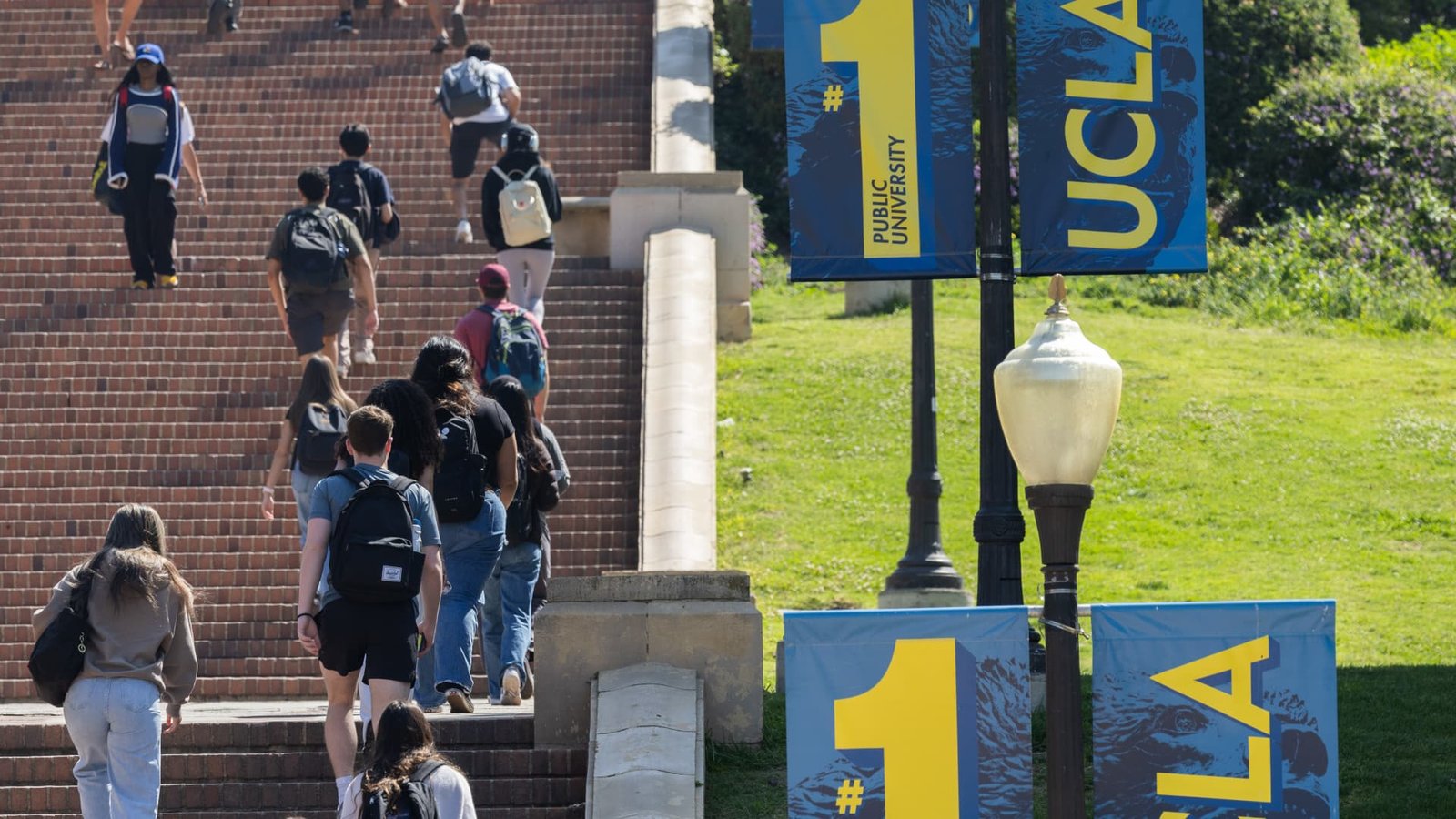The Janss Steps at UCLA in Westwood, California, April 8, 2025.
Myung J. Chun | Los Angeles Times | Getty Images
With the start of fall semester just weeks away, sky-high college costs are an extreme pain point for most students and their parents.
A recent survey by Citizens Financial Group found a growing “confidence gap.” While 59% of parents said they were confident about managing college expenses when their child was accepted, just 21% said they felt prepared for the actual cost once tuition bills arrived.
“We know the cost of attendance continues to grow, and a lot of forms of federal lending and grants and aid have not kept pace,” said Chris Ebeling, head of student lending at Citizens.
“Families felt like they were going to be OK, but once those tuition bills arrived, that number plummeted,” Ebeling said.
In April and May, Citizens polled more than 1,000 parents of children ages 13 to 29 who either plan to attend or have some experience with college.
More from Personal Finance:
These college majors have the best job prospects
Student loan forgiveness may soon be taxed again
Student loan borrowers — how will the end of the SAVE plan impact you? Tell us
College costs have risen significantly in recent decades, with tuition increasing 5.6% a year, on average, since 1983 — outpacing inflation and other household expenses, according to a recent report by J.P. Morgan Asset Management.
A growing number of schools are now nearing or crossing the $100,000 threshold for total annual cost to attend, according to data from The Princeton Review. And, according to J.P. Morgan, tuition is still rising about 5% a year.
How much families really pay for college
Few families pay a school’s sticker price. As of the 2024-25 academic year, the amount families actually spent on education costs was closer to $31,000, on average, according to Sallie Mae’s annual How America Pays for College report. Still, that figure is up nearly 10% from a year earlier.
Sallie Mae polled 1,000 parents of undergraduate students between the ages of 18 and 24, as well as 1,000 undergraduate students, between April 8 and May 8.
In most cases, parent income and savings cover about half of college costs. Free money from scholarships and grants accounts for more than a quarter of the costs and student loans make up most of the rest, the education lender found.
Scholarships are a funding source for only 60% of families, according to Sallie Mae. Those students who get scholarships receive about $8,000, on average.
“Every dollar counts when it comes to paying for college,” said Rick Castellano, a spokesperson for Sallie Mae. “The last thing you want to do is leave free money on the table.”
There are other “stubborn statistics,” Castellano said, that are at odds with the growing cost-consciousness among families.
Only 71% of families submitted the Free Application for Federal Student Aid, or FAFSA, which serves as the gateway to all federal aid money, including loans, work study and grants. That’s down from 74% in the previous academic year.

And although most advisors say 529 college savings plans are a good idea — a “no-brainer,” according to wealth advisor Marshall Nelson — largely because of the tax advantages, fewer than one-third of families use them, according to Sallie Mae.
“I think there is generally a lack of awareness around 529 plans,” Castellano said.
A July report from Credit Karma paints an even starker picture: Fewer than one-quarter of parents polled said they had a 529 account for their children and 43% said they’ve never heard of a 529 at all.
About 18% said they aren’t contributing to a 529 account because they didn’t realize the funds could be used for education expenses other than college, such as K-12 private school tuition or trade and vocational programs. President Donald Trump‘s massive 2025 tax and spending package expanded 529 qualified education expenses even further to include educational therapies and tutoring, among other costs, for students as early as kindergarten.
Most experts say 529 plans are frequently misunderstood and overlooked. But even among families that do have a college plan and have saved for years, few have enough stashed away to cover the entire cost.
“Even those families that are really well prepared, most families are going to have a financial gap,” Ebeling said.
Another point of contention is the growing share of young adults rethinking their education altogether. The rising cost of attendance and ballooning student loan balances have played a big role in changing views about the higher education system, with an increasing number of students opting out.
“The last thing you want, as parents or students, is to feel like higher education is the ultimate goal and you get ready to pay and it’s just not possible,” Castellano said.







